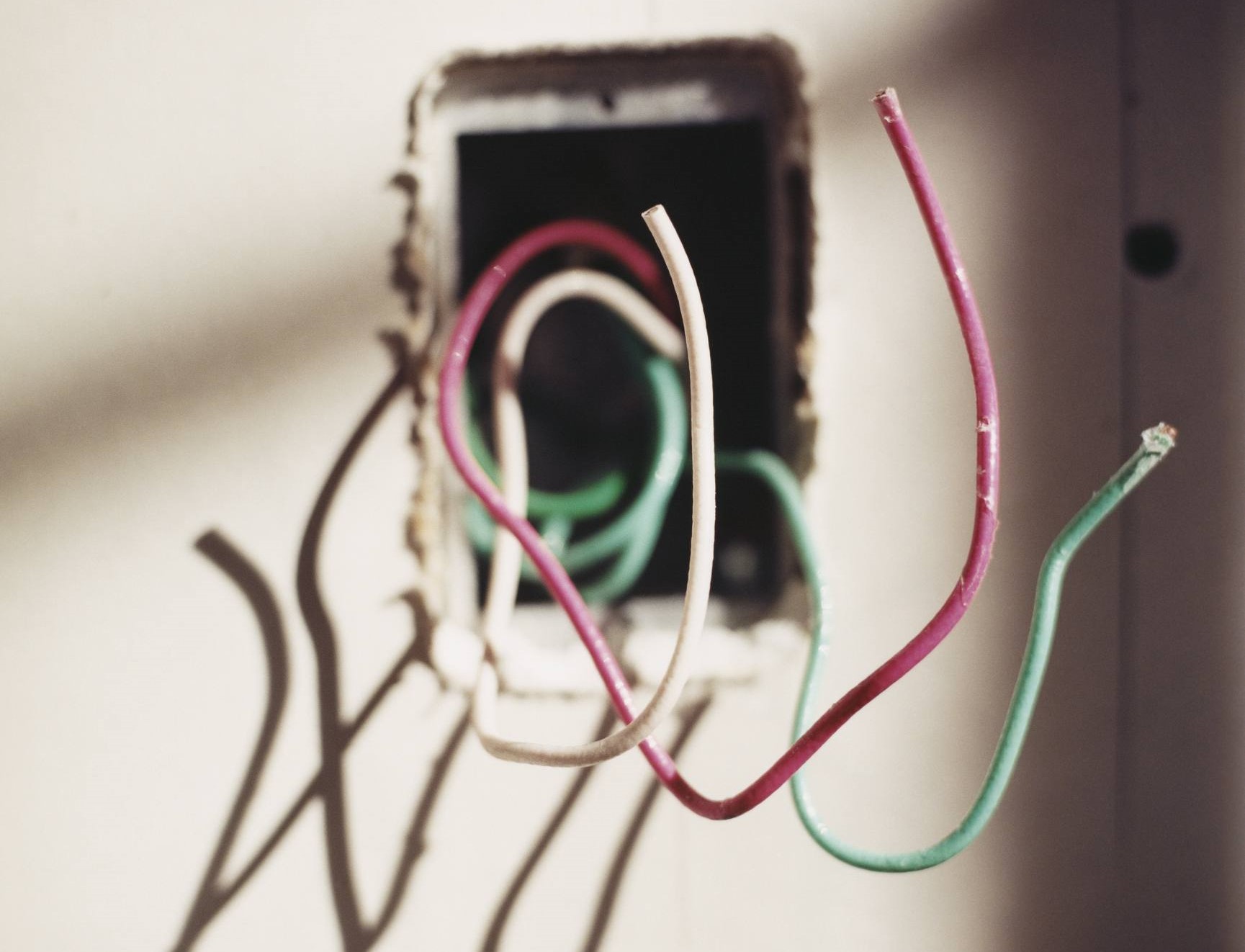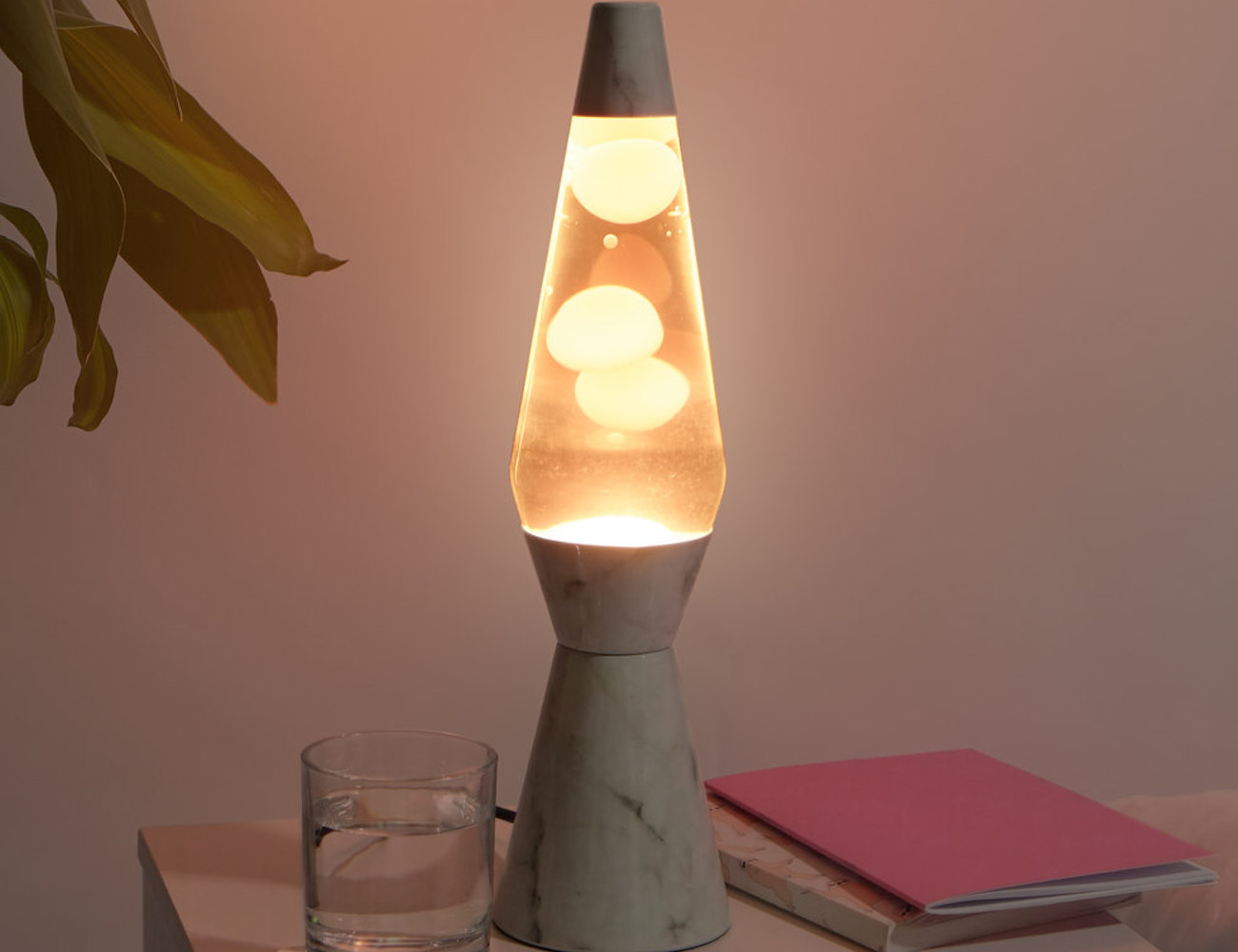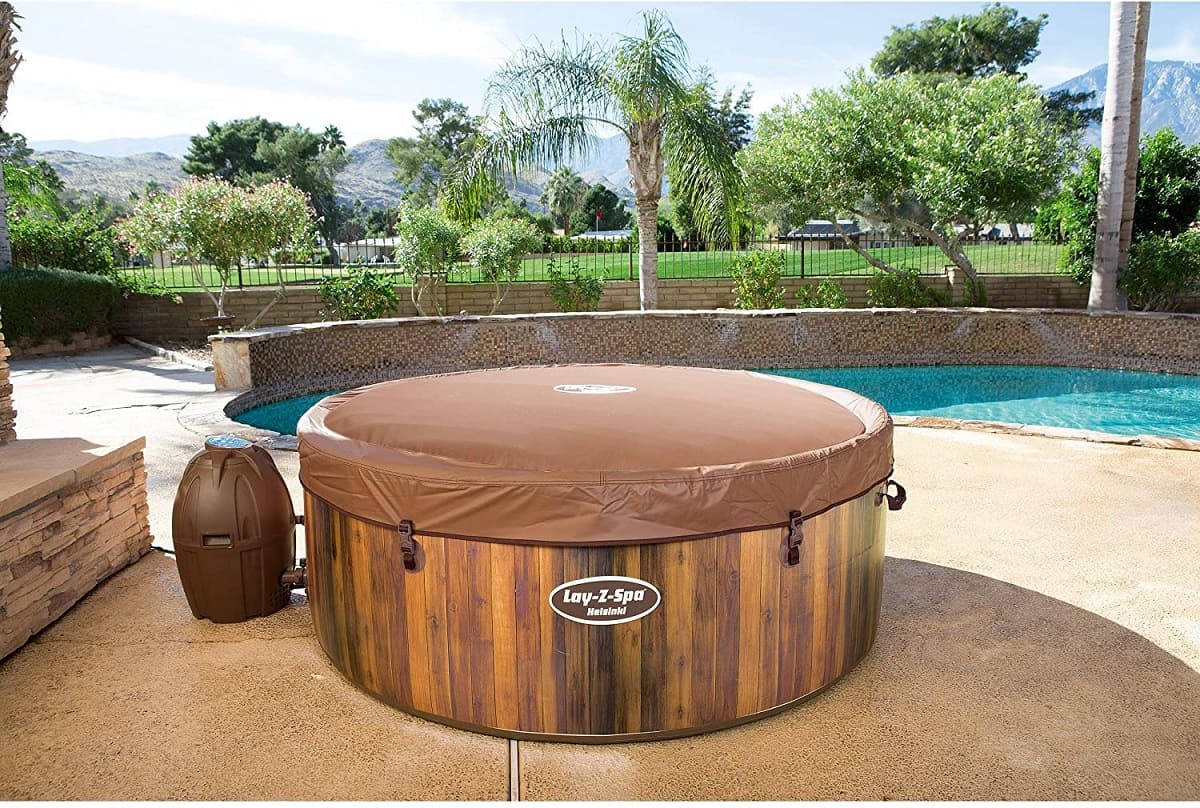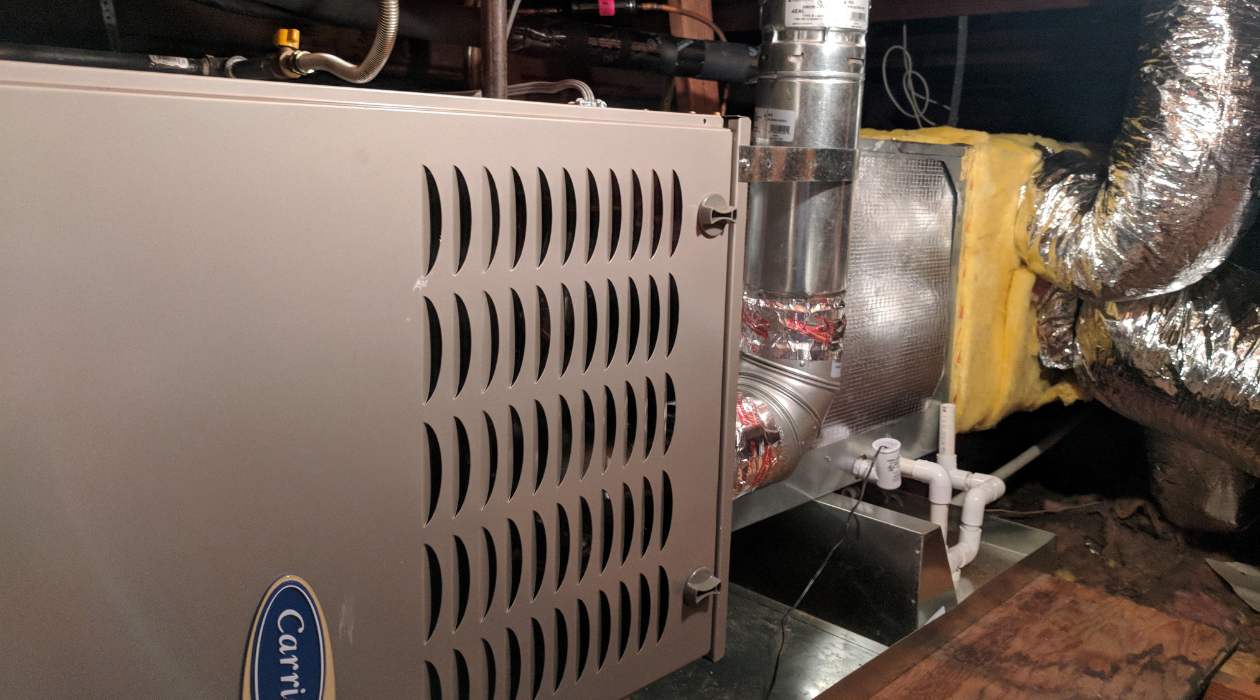

Articles
How Hot Can An Attic Get In The Summer
Modified: October 18, 2024
Discover the answer to how hot an attic can get in the summer with our informative articles. Gain insights and tips to keep your attic cool and comfortable.
(Many of the links in this article redirect to a specific reviewed product. Your purchase of these products through affiliate links helps to generate commission for Storables.com, at no extra cost. Learn more)
Introduction
During the scorching summer months, the temperature inside your attic can reach soaring heights. Understanding how hot an attic can get and the factors that contribute to these high temperatures can help you take necessary measures to keep your home cool and energy-efficient. In this article, we will dive into the topic of attic temperatures in the summer, explore the factors that influence them, discuss the potential problems caused by excessive heat, and provide tips on how to reduce attic temperatures.
Attic temperature is influenced by several factors, including insulation, ventilation, and the color and material of the roof. These factors work together to determine how much heat is trapped or dissipated in your attic space.
Insulation plays a critical role in regulating attic temperature. Proper insulation helps to minimize heat transfer from the hot outside air to the inside of your home. It acts as a barrier, preventing the air in the attic from entering the living spaces. The quality and thickness of insulation determine its effectiveness in reducing heat conduction and keeping the temperature inside the attic cooler.
Ventilation is another important factor in controlling attic temperature. Proper ventilation allows hot air to escape from the attic, replacing it with cooler air from outside. This airflow helps to dissipate the heat, preventing it from building up and making the attic excessively hot. Without adequate ventilation, the attic can become a heat trap, leading to high temperatures that can affect the entire house.
The color and material of your roof also play a role in determining attic temperature. Dark-colored roofs tend to absorb more heat from the sun’s rays, which can lead to higher attic temperatures. On the other hand, lighter-colored roofs and reflective roofing materials can help to reflect the sun’s heat and keep the attic cooler.
Understanding how heat is transferred in the attic is also essential in comprehending attic temperature dynamics. Heat transfer in attics occurs through three main mechanisms: conduction, radiation, and convection.
Conduction involves the transfer of heat through solid materials, such as the roof and attic floor. The outside heat is conducted through the roof into the attic, contributing to an increase in temperature.
Radiation is the transfer of heat through electromagnetic waves. The sun’s rays directly penetrate the roof and radiate heat into the attic, leading to further temperature rise.
Convection is the transfer of heat through the movement of air. When the attic heats up, the air inside becomes hot and rises, creating a convection current. Proper ventilation allows for the expulsion of the hot air and replacement with cooler air, preventing the attic from becoming excessively hot.
Now that we understand the factors involved in attic temperature and how heat transfer occurs, let’s explore how hot an attic can get during the summer.
Key Takeaways:
- Attic temperatures can reach extreme levels in summer, leading to damaged shingles, increased energy costs, and decreased HVAC lifespan. Proper insulation, ventilation, and radiant barriers are crucial for reducing heat and maintaining a comfortable home.
- Understanding heat transfer mechanisms in attics, such as conduction, radiation, and convection, is essential for homeowners to implement effective strategies to reduce attic temperatures. Adequate insulation, proper ventilation, and radiant barriers can significantly improve energy efficiency and comfort.
Read more: How To Keep The Attic Cool In Summer
Factors influencing attic temperature
When it comes to attic temperatures in the summer, there are several key factors that influence how hot it can get. These factors include insulation, ventilation, and the color and material of the roof. Let’s take a closer look at each of these factors and their impact on attic temperature.
Insulation
Insulation plays a vital role in regulating attic temperature. It acts as a barrier, preventing heat from transferring from the outside to the inside of your home. Without proper insulation, the hot air from the outside can enter the attic and significantly increase the temperature. The quality and thickness of insulation are crucial for its effectiveness in reducing heat conduction. Well-insulated attics can help keep the temperature inside cooler, making your home more energy-efficient and comfortable.
Ventilation
Ventilation is another key factor in controlling attic temperature. Proper attic ventilation allows for the exchange of hot air with cooler air from outside. It helps to dissipate the heat that accumulates in the attic, preventing excessive temperatures. Without adequate ventilation, hot air becomes trapped in the attic, leading to intense heat buildup. This can not only make your living spaces uncomfortable but also potentially damage your roof and affect the overall energy efficiency of your home. Proper airflow through attic vents or fans is essential for maintaining a cool and well-ventilated attic.
Roof color and material
The color and material of your roof also impact attic temperature. Dark-colored roofs tend to absorb more heat from the sun’s rays, leading to higher attic temperatures. As the roof heats up, it transfers some of that heat to the attic, raising the overall temperature. On the other hand, lighter-colored roofs reflect more of the sun’s heat and help to keep the attic cooler. Reflective roofing materials, such as metal or tile, can also contribute to lower attic temperatures by minimizing the absorption of heat. Choosing the right roof color and material can make a significant difference in how hot your attic gets during the summer months.
Understanding the role of insulation, ventilation, and the color and material of your roof in attic temperature can help you make informed decisions to optimize your attic’s cooling efficiency. By addressing these factors, you can create a more comfortable living environment, reduce energy consumption, and potentially prolong the lifespan of your HVAC systems.
Read more: How Hot Can Glass Get
Understanding heat transfer in attics
To fully grasp how heat is transferred and affects the temperature in your attic, it’s important to understand the three main mechanisms of heat transfer: conduction, radiation, and convection. Let’s explore each of these processes in the context of attic temperature.
Conduction
Conduction is the transfer of heat through solid materials. In the case of attics, conduction occurs when heat is conducted through the roof, walls, and attic floor. During hot summer days, the sun’s rays heat up the roof, and the heat is conducted through the roof materials and into the attic. This heat transfer can cause the temperature inside the attic to rise rapidly. Similarly, heat from the attic can be conducted downward through the attic floor, affecting the rooms below. Proper insulation helps to reduce conduction by acting as a barrier, slowing down the transfer of heat between the attic and the rest of the house.
Radiation
Radiation is the transfer of heat through electromagnetic waves. When the sun’s rays hit the roof, they transfer energy in the form of heat to the attic. This process is known as radiation. Dark-colored roofs and roofs made from materials with low reflective properties tend to absorb more of the sun’s energy, leading to higher attic temperatures. Reflective and light-colored roofs, on the other hand, reflect more of the sun’s rays and help to keep the attic cooler. Radiation is a significant contributor to attic heat gain, especially during sunny summer days.
Convection
Convection is the transfer of heat through the movement of fluids or gases, such as air. In attics, convection occurs as hot air rises and cool air replaces it. During summer, the sun’s rays heat up the air inside the attic, causing it to become less dense and rise. As this heated air rises, it creates a convection current that draws in cooler air from outside. Proper attic ventilation is crucial to allow the hot air to escape and be replaced by cooler air. Without proper ventilation, the hot air gets trapped in the attic, leading to a significant increase in temperature. By facilitating the flow of air, attic ventilation helps to dissipate heat and maintain a cooler attic temperature.
Understanding how heat is transferred in attics through conduction, radiation, and convection helps you recognize the contributing factors to high attic temperatures. By addressing these heat transfer mechanisms, you can implement strategies to reduce attic temperature, improve energy efficiency, and create a more comfortable living environment.
Read more: How Does Attic Insulation Help In Summer
Typical attic temperatures in summer
Attic temperatures during the summer months can reach extremely high levels, posing challenges for homeowners in terms of comfort and energy efficiency. Several factors contribute to the rise in attic temperature, including the influence of outdoor temperature, the impact of direct sunlight, and heat accumulation within the attic. Let’s explore each of these factors in more detail.
Influence of outdoor temperature
The outdoor temperature plays a significant role in determining how hot an attic can get. As the temperature rises outside, the heat is transferred to the roof through conduction and radiation. This heat then seeps into the attic, raising the temperature inside. Attics can easily become a heat trap, especially if there is inadequate insulation or ventilation to mitigate the effects of the outdoor temperature. As a result, the attic temperature can surpass the outdoor temperature, leading to uncomfortable living conditions and increased energy consumption.
Impact of direct sunlight
Direct sunlight has a substantial impact on attic temperatures. When the sun’s rays directly hit the roof, the roof material absorbs the solar energy, converting it into heat. This heat is then transferred to the attic through conduction and radiation. Dark-colored roofs tend to absorb more solar energy and increase attic temperatures even more. Consequently, attics with direct exposure to sunlight experience higher temperatures than those in shaded areas. The amount and intensity of sunlight, as well as the orientation and tilt of the roof, play a role in determining the degree of heat accumulation in the attic.
Heat accumulation in the attic
Heat accumulation is a significant concern in attics during summer. As heat from the outdoor environment enters the attic through conduction and radiation, it can become trapped due to a lack of proper ventilation or insulation. The heat accumulates over time, raising the temperature even further. High attic temperatures can have several negative consequences, including accelerating the deterioration of roofing materials, increasing energy costs, and affecting the overall lifespan and efficiency of HVAC systems located in the attic.
Typical attic temperatures in summer can range from 120-160°F (49-71°C) or even higher in extreme cases. In some regions with intense heat, the attic temperatures can surpass 170°F (77°C). These soaring temperatures necessitate the implementation of strategies to reduce attic heat and create a more comfortable living environment.
By understanding the factors that contribute to high attic temperatures, homeowners can take steps to mitigate heat accumulation, improve attic ventilation, and enhance insulation. These measures can help maintain lower attic temperatures, reduce the strain on cooling systems, and increase energy efficiency throughout the home.
Read more: How Hot Can Stove Top Get
Potential problems caused by high attic temperatures
High attic temperatures during the summer can have significant consequences for your home and its systems. The excessive heat can lead to various problems, including damaged roof shingles, increased energy costs, and a decreased lifespan of HVAC (Heating, Ventilation, and Air Conditioning) systems. Let’s explore these potential issues in more detail.
1. Damaged roof shingles
Extreme heat in the attic can cause damage to your roof shingles. When the temperature in the attic rises above normal levels, the heat can penetrate through the roof material and reach the shingles. Over time, this prolonged exposure to high temperatures can lead to the degradation of the shingles. They may become brittle, crack, or warp, compromising their ability to protect your home from the elements. Damaged roof shingles can result in leaks, water damage, and the need for costly repairs or roof replacements.
2. Increased energy costs
High attic temperatures can significantly increase your energy costs. When the attic becomes excessively hot, the heat radiates downward into your living spaces. This places a greater demand on your cooling system to maintain comfortable indoor temperatures, leading to increased energy consumption. The HVAC system must work harder and for longer periods to compensate for the heat gain, resulting in higher energy bills. By addressing attic temperature issues, such as improving insulation and ventilation, you can help reduce the strain on your cooling system and lower your energy costs.
3. Decreased lifespan of HVAC systems
The lifespan of your HVAC systems can be negatively impacted by high attic temperatures. The excessive heat in the attic places additional stress on your air conditioning unit, causing it to work harder and for longer durations. This increased workload can lead to accelerated wear and tear, reducing the lifespan of the system. Additionally, the heat can cause components to overheat, potentially leading to breakdowns or the need for costly repairs. By maintaining lower attic temperatures, you can extend the lifespan of your HVAC systems and avoid premature replacements.
Addressing and mitigating the problems caused by high attic temperatures is essential for the overall well-being and efficiency of your home. Implementing proper insulation and ventilation practices, as well as maintaining the condition of your roof, can help prevent these issues and save you from costly repairs or replacements down the line. Regular maintenance of your HVAC systems is also crucial in ensuring their longevity and optimal performance.
Read more: How To Use Hot Tub In Summer
Tips for reducing attic temperature
To combat the challenges of high attic temperatures and create a more comfortable and energy-efficient home, there are several effective strategies to implement. These include ensuring adequate insulation, proper attic ventilation, and installing radiant barriers. Let’s explore each of these tips in detail.
Adequate insulation
One of the most important factors in reducing attic temperature is ensuring adequate insulation. Insulation acts as a barrier, preventing heat transfer between the attic and the living spaces below. By adding or upgrading insulation in your attic, you can minimize heat conduction and keep your home cooler. It is crucial to choose insulation materials with a high R-value, which indicates their resistance to heat flow. Properly installed insulation helps maintain a consistent and comfortable temperature inside your home, while also reducing energy consumption.
Proper attic ventilation
Proper attic ventilation is essential for maintaining lower attic temperatures. Well-designed ventilation systems allow for the exchange of hot air with cooler air from outside, effectively dissipating heat from the attic. It helps to prevent the heat from accumulating and transferring into the interior living spaces. Attic vents, soffit vents, and ridge vents are commonly used to promote airflow and prevent the attic from becoming a heat trap. It is important to ensure that these ventilation openings are not obstructed to allow for free airflow and efficient heat dissipation.
Installing radiant barriers
Installing radiant barriers in your attic can significantly reduce radiant heat transfer and lower attic temperatures. Radiant barriers are reflective materials that can be installed on the underside of the roof. They work by reflecting the sun’s heat away from the attic, preventing it from penetrating and increasing the temperature. Radiant barriers are particularly effective in areas with intense sunlight and can be used in conjunction with insulation and proper ventilation for optimal results.
Additionally, other strategies such as selecting light-colored or reflective roofing materials, planting shade-providing trees near your home, and sealing air leaks in the attic can help further reduce attic temperatures. It is also advisable to schedule regular inspections and maintenance of your insulation, ventilation, and roofing systems to ensure they are functioning optimally.
By implementing these tips for reducing attic temperature, you can create a more comfortable living environment, cut down on energy costs, and extend the lifespan of your HVAC systems. Optimal attic conditions not only benefit your home’s energy efficiency but also contribute to the overall comfort and well-being of your household.
Read more: How Hot Can A Toaster Oven Get
Conclusion
Understanding how hot an attic can get in the summer and the factors that influence attic temperature is crucial for maintaining a comfortable and energy-efficient home. Factors such as insulation, ventilation, and the color and material of the roof all play a significant role in determining attic temperatures.
Heat transfer in attics occurs through conduction, radiation, and convection. Conduction involves the transfer of heat through solid materials, while radiation involves the transfer of heat through electromagnetic waves. Convection is the transfer of heat through the movement of air. By understanding these mechanisms, homeowners can take appropriate measures to reduce attic temperature.
Attic temperatures in summer can reach extreme levels, leading to various problems. High attic temperatures can damage roof shingles, increase energy costs, and decrease the lifespan of HVAC systems. Damaged shingles can lead to leaks and costly repairs, while high energy costs can strain your budget. Moreover, increased attic temperatures can put additional stress on HVAC systems, potentially resulting in breakdowns and costly replacements.
To reduce attic temperature, homeowners can follow several tips. Adequate insulation acts as a barrier, preventing heat transfer between the attic and living spaces. Proper attic ventilation facilitates the exchange of hot air with cooler air, preventing heat accumulation. Installing radiant barriers can reflect the sun’s heat away from the attic, reducing radiant heat transfer. These measures work together to create a more comfortable living environment and minimize energy consumption.
In conclusion, mitigating high attic temperatures is essential for maintaining a comfortable, energy-efficient home. By addressing factors such as insulation, ventilation, and radiant barriers, homeowners can reduce attic temperatures, prevent damage to the roof, lower energy costs, and prolong the lifespan of HVAC systems. Investing in proper attic temperature management not only enhances your living experience but also contributes to overall home sustainability.
Frequently Asked Questions about How Hot Can An Attic Get In The Summer
Was this page helpful?
At Storables.com, we guarantee accurate and reliable information. Our content, validated by Expert Board Contributors, is crafted following stringent Editorial Policies. We're committed to providing you with well-researched, expert-backed insights for all your informational needs.











0 thoughts on “How Hot Can An Attic Get In The Summer”